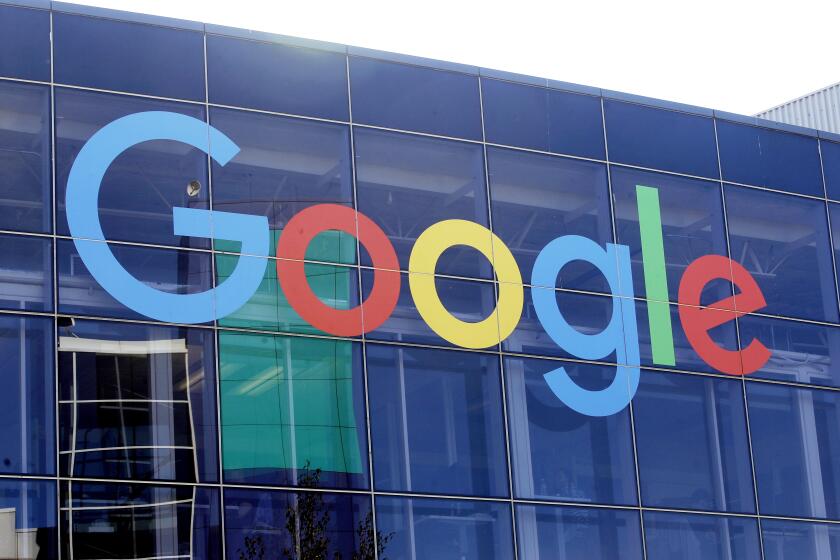Column: This drug company placed a nearly $10,000 price tag on drugs that may not even work
- Share via
Profiteering in the drug business has been generating outrage for months now. Gilead Sciences and Mylan have been taking the heat for huge increases in the prices, respectively, for their hepatitis-C cures and injectors to fend off life-threatening allergic reactions. But at least we can say this about them: Their products work.
That may not necessarily be true about some of the drugs for which Chicago-based Novum Pharma has raised prices as much as 40-fold. Two of the three topical gels for dermatological conditions distributed by Novum are listed by the Food and Drug Administration as only “possibly effective.” That’s one of the lower classifications in the FDA’s roster, coming below “effective” and “probably effective.”
“Final classification of the less-than-effective indications,” the company says in the prescribing circular for the drugs, “requires further investigation.”
It troubles me greatly that the EpiPen product has become a source of controversy.
— Mylan CEO Heather Bresch, testifying before Congress
Those drugs are Alcortin A, the wholesale price of which Novum jacked up from $226 to $9,561 per 48-gram tube, and Aloquin, which went from $241.50 to the same price of $9,561 for 60 grams. Both can be prescribed for dermatitis, eczema and other such conditions. Novacort, a corticosteroid ointment for skin inflammations which doesn’t carry any FDA doubts, went from $4,186 to $7,142 for a 29-gram tube.
Novum told us that those prices, which were ferreted out by the Financial Times and in a follow-up article by Ed Silverman of Stat News, aren’t accurate but wouldn’t provide its own figures. In any event, according to company spokesman Rand Walton, the prices “are not even close to the actual price Novum ultimately realizes.” Walton’s point was that the drug prices are inflated by “thousands of dollars in extra charges that are added by various third-party middlemen and passed onto patients.”
Where have we heard this before? We heard it from Heather Bresch, the CEO of Mylan, who appeared before a House committee looking into her price increases for the EpiPen, the epinephrine injector for which Mylan has been charging a wholesale price of more than $600 for a two-pen pack. That figure included “rebates and various fees,” she asserted in her written remarks, reducing Mylan’s actual take by more than half. (See her testimony below.)
This is all misdirection. It’s aimed at making it appear that the drug companies have no choice but to jack up their prices by enormous amounts, merely to eke out a modest profit. When pressed, they talk about “the complex environment in which pharmaceutical prices are determined” (Bresch) or the “broken and unsustainable … pharmaceutical pricing process in the United States” (Novum’s Walton). The truth is that the drug companies set the price, period, and they set it according to what they think the market will bear.
To talk about manufacturing or research and development costs, as Bresch did, is merely a dodge. Bresch bragged to Congress that Mylan is spending “$1.2 billion on R&D and manufacturing facilities, or roughly $3 million per day”; she didn’t complete the equation by acknowledging that the company collects revenue of about $26 million a day.
The products for which Mylan and Novum charged their stratospheric prices are based on generic drugs that have been available for years, even decades. Their research and development amounted largely to acquiring rights to existing drugs from others. Novum was founded and acquired the rights to its three drugs in 2015. Mylan bought the rights to the EpiPen from Merck in 2007. The R&D leading to Gilead’s hepatitis wonder drug Sovaldi was performed by Pharmasset, an independent company that Gilead bought for $11 billion, cash, in 2012, to get its mitts on the product.
The drug companies all point out that their patient assistance programs reduce the out-of-pocket costs to patients substantially, sometimes even to zero. “All patients with commercial insurance only pay $0 for Novum products, even when their insurance doesn’t cover them,” Walton told us by email. “Furthermore, cash-paying patients never have to pay more than $35.” Similarly, Mylan is bringing out a “generic” version of its EpiPen at half the retail price, and is expanding its low-cost or free pen program to cover more patients.
As we’ve pointed out before, such programs are aimed at shrouding from view the broader consequences of the drug makers’ business models. Someone pays the wholesale price, or something near it; that someone is you, via your insurance premiums and taxes used to support Medicare and Medicaid. The drug companies hope that by taking the burden of high prices off the little guy by covering his or her co-pays, they can continue to charge full price to the deep-pocketed payers.
But that doesn’t entirely work. It still imposes huge costs on the healthcare system overall. Some insurers and government programs respond to the burden by limiting coverage of these overpriced drugs to only certain patients. That makes a mockery of Bresch’s assertion in her congressional testimony that Mylan’s great goal was to “expand access” for patients to the EpiPen, which apparently it thought it could do by inflating its price by 500%.
The more that cases like these proliferate, the more it becomes clear that market forces have failed to spread the benefits of pharmaceuticals fairly in the United States, one of the few developed countries with hands-off policies on drug prices. The solutions are becoming clearer every day: provide U.S. patients with access to lower prices in Canada or elsewhere, ease the introduction of generic rivals to high-priced drugs, require that drug prices be related in some way to manufacturing or research costs and require documentation of the same. Or all three.
Keep up to date with Michael Hiltzik. Follow @hiltzikm on Twitter, see his Facebook page, or email michael.hiltzik@latimes.com.
Return to Michael Hiltzik’s blog.
More to Read
Inside the business of entertainment
The Wide Shot brings you news, analysis and insights on everything from streaming wars to production — and what it all means for the future.
You may occasionally receive promotional content from the Los Angeles Times.











